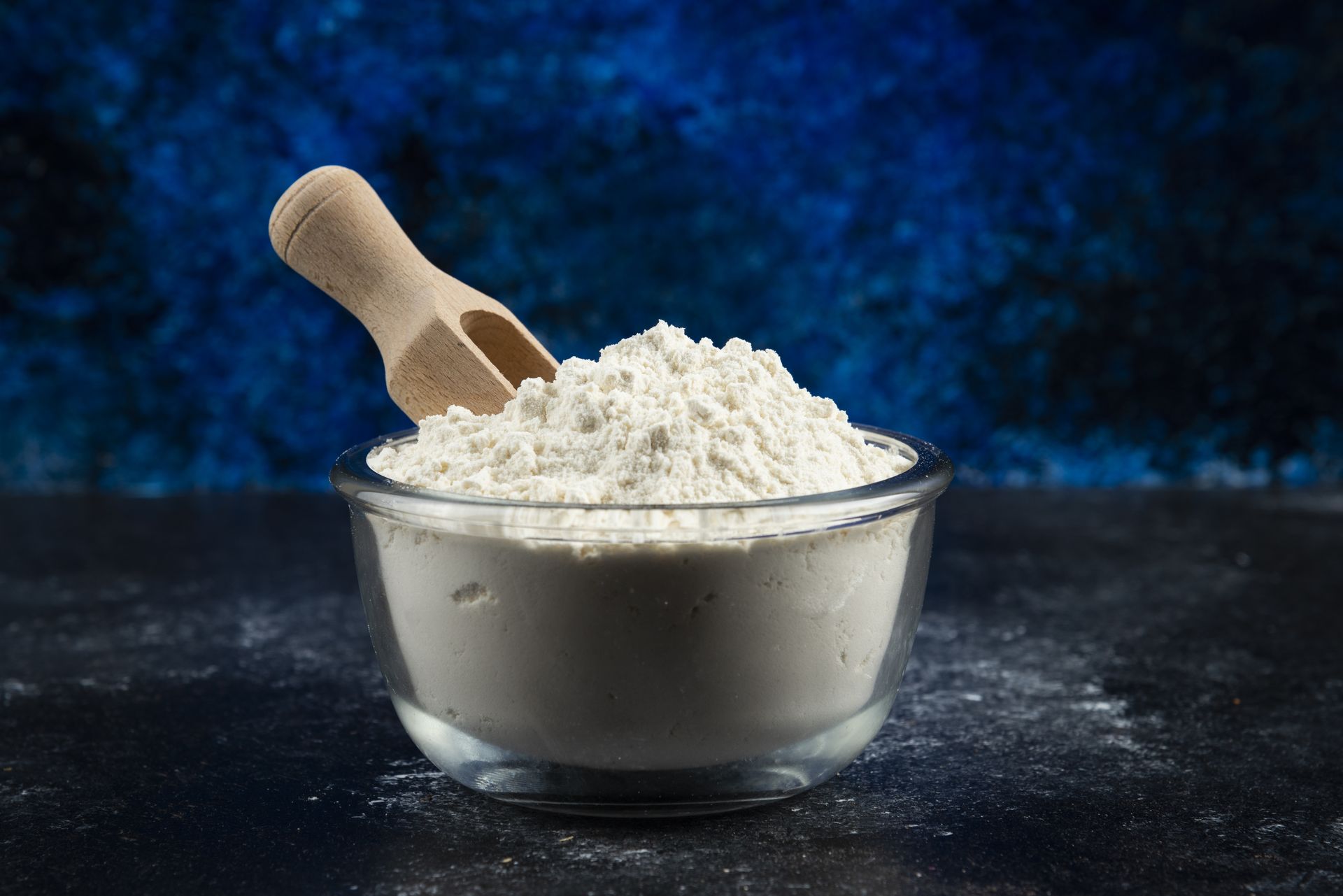Does Nutritional Yeast Expire? Shelf Life Tips

Welcome to our comprehensive guide on nutritional yeast! If you're a vegetarian or vegan, chances are you've come across this versatile ingredient in many of your favorite recipes. But have you ever wondered does nutritional yeast go bad? How long does it last? And what's the best way to store it to ensure its freshness and quality?
In this article, we will address all your concerns about the shelf life of nutritional yeast and provide you with helpful tips on how to store it effectively. So, let's dive in and discover everything you need to know about preserving nutritional yeast!
Key Takeaways
- Nutritional yeast is a popular ingredient among vegetarians and vegans due to its unique flavor and nutritional benefits.
- Proper storage is essential for prolonging the freshness of nutritional yeast.
- By following the tips and best practices discussed in this article, you can maintain the quality and flavor of your nutritional yeast for a longer period.
- It's important to check for signs of spoilage before consuming expired nutritional yeast.
- With proper storage techniques, you can enjoy the taste and nutritional benefits of nutritional yeast in various dishes.
Understanding Nutritional Yeast and Its Popularity
Nutritional yeast is not your typical yeast. It is an inactive form of yeast that is widely used in the vegetarian and vegan community for its unique properties and flavor.
Not Your Average Yeast: The Unique Properties of Nutritional Yeast
Nutritional yeast stands out from other yeasts due to its distinctive characteristics. Unlike active yeast used for baking, nutritional yeast is deactivated, meaning it cannot ferment or leaven food. However, this inactivation process enhances its nutritional profile and imparts a savory, cheesy flavor to dishes.
The Nutrients That Make It a Vegan Staple
Nutritional yeast is rich in essential nutrients, making it a popular choice among vegans and vegetarians. It is an excellent source of protein, B vitamins, and minerals like zinc and selenium. The high protein content makes it an ideal supplement for individuals following plant-based diets.
Culinary Versatility: From Cheesy Flavors to Umami Touches
One of the reasons nutritional yeast has gained immense popularity is its culinary versatility. It can be used to add cheesy and umami flavors to a wide range of dishes. Sprinkle it on popcorn, pasta, or roasted vegetables for a savory twist. Incorporate it into sauces, dips, and dressings to enhance their taste profile. Nutritional yeast is a perfect ingredient for creating vegan cheese alternatives or adding depth to plant-based soups and stews.
Nutritional Yeast Storage: Prolonging Its Freshness
Proper storage is essential for prolonging the freshness of nutritional yeast. By following the best practices we outline below, you can ensure that your nutritional yeast maintains its quality and flavor for an extended period.
Best Practices for Storing Nutritional Yeast
When it comes to storing nutritional yeast, there are a few key practices to keep in mind:
- Always transfer your nutritional yeast to an airtight container. This helps prevent moisture and air from getting in, which can cause degradation over time.
- Store your nutritional yeast in a cool, dark place. Exposure to heat and light can accelerate the breakdown of the ingredients and affect its overall quality.
- Avoid storing nutritional yeast near strong-smelling items, as it can absorb odors easily.
By following these simple steps, you can ensure that your nutritional yeast stays fresh and delicious for longer.
Choosing the Right Containers for Preservation
When it comes to choosing the right containers for storing nutritional yeast, opt for ones that are specifically designed for food preservation. Glass jars with tight-fitting lids or food-grade plastic containers are great options.
It's important to choose containers that are made of materials that don't leach harmful chemicals into your nutritional yeast. The wrong container can affect the flavor and quality of the yeast, so be sure to select one that is food safe.

Environmental Factors Affecting Nutritional Yeast Shelf Life
Several environmental factors can have an impact on the shelf life of nutritional yeast:
- Temperature: Extreme temperatures, both hot and cold, can degrade the quality of nutritional yeast. Aim to store it in a cool and stable environment.
- Moisture: Moisture can cause clumping and spoilage, so it's essential to keep nutritional yeast in a dry place.
- Light: Exposure to light can lead to the breakdown of the nutrients in nutritional yeast. Store it in a dark place or a container that effectively blocks out light.
By considering these environmental factors and implementing proper storage practices, you can maximize the shelf life of your nutritional yeast and continue to enjoy its fantastic flavor and nutritional benefits.
Does Nutritional Yeast Go Bad? Identifying Spoilage
While nutritional yeast has a long shelf life, it is important to note that it can eventually go bad if not stored properly. In this section, we will discuss the signs of spoilage to look out for in order to determine if your nutritional yeast has gone bad.
Visual indicators are often the first clues that nutritional yeast may have spoilt. Keep an eye out for the following signs:
- Mold: If you notice any mold growth on the surface of the nutritional yeast, it is a clear sign that it has spoiled and should not be consumed.
- Discoloration: Pay attention to any changes in color, such as dark spots or an overall yellowish hue. These can indicate the presence of harmful microorganisms.
Aside from visual cues, changes in smell and texture can also indicate spoilage:
- Off-smell: If your nutritional yeast emits a pungent or foul odor, it is likely no longer good for consumption. A strong, unpleasant smell can indicate the growth of harmful bacteria or yeast.
- Clumping or stickiness: Nutritional yeast should have a dry, flaky texture. If it becomes clumpy or sticky, it may have absorbed moisture and is no longer suitable for use.
It is important to note that expired nutritional yeast is not recommended for consumption. While the exact shelf life can vary depending on factors such as storage conditions and brand, it is generally safe to consume within a year of purchase when stored in a cool, dry place.
Now that you know how to identify signs of spoilage in nutritional yeast, you can ensure that you are always using fresh and safe ingredients in your meals.
Conclusion
Nutritional yeast is a versatile ingredient that offers a long shelf life when stored properly. By implementing the tips and best practices we have discussed in this article, you can extend the freshness of your nutritional yeast and fully savor its unique flavor and nutritional benefits for an extended period. It is crucial to be vigilant and check for signs of spoilage before consuming expired nutritional yeast to prioritize your health and safety. Remember, with proper storage techniques, you can maximize the potential of nutritional yeast and enhance the taste of a wide range of dishes.
Whether you're a vegan, vegetarian, or simply someone looking to incorporate more plant-based ingredients into your diet, nutritional yeast is an excellent addition to your pantry. Its long shelf life ensures that you can always have this tasty and nutrient-rich ingredient on hand whenever you need it.
So, remember to store your nutritional yeast in airtight containers in a cool, dark place to protect it from environmental factors that can affect its shelf life. Proper storage will help maintain the quality and flavor of your nutritional yeast, ensuring that it remains fresh and ready to elevate your favorite recipes. Don't let valuable ingredients go to waste – implement these shelf life tips and savor the benefits of nutritional yeast for months to come!







![[ATP] Energy Surge](/web/image/product.product/1055/image_256)
![[TTCAP] Hammer Nutrition Technical Trucker BOCO Cap](/web/image/product.product/3843/image_256)